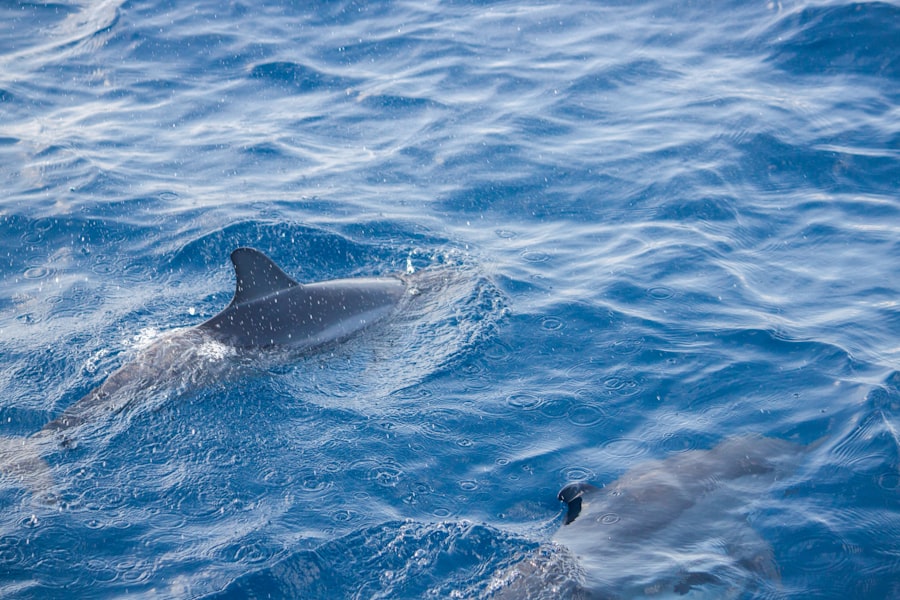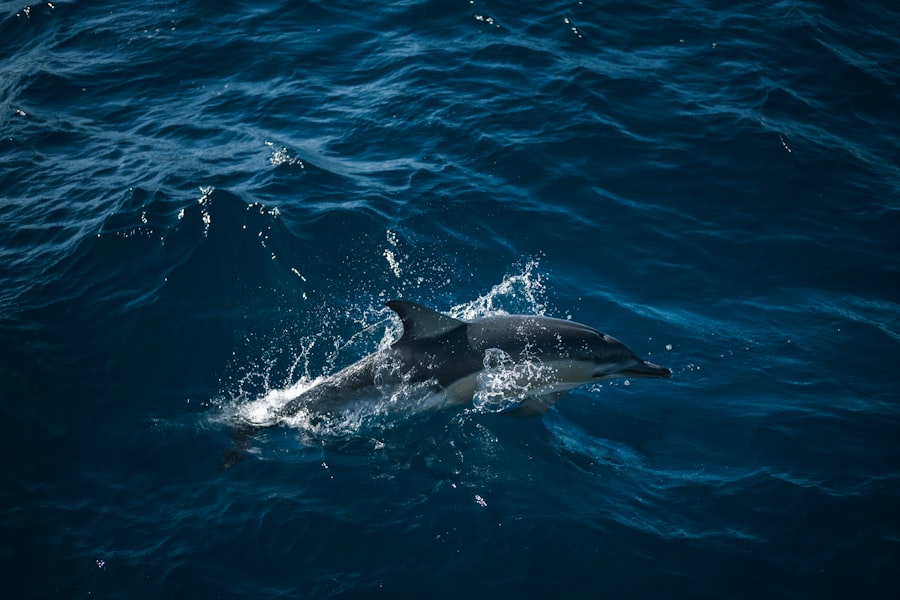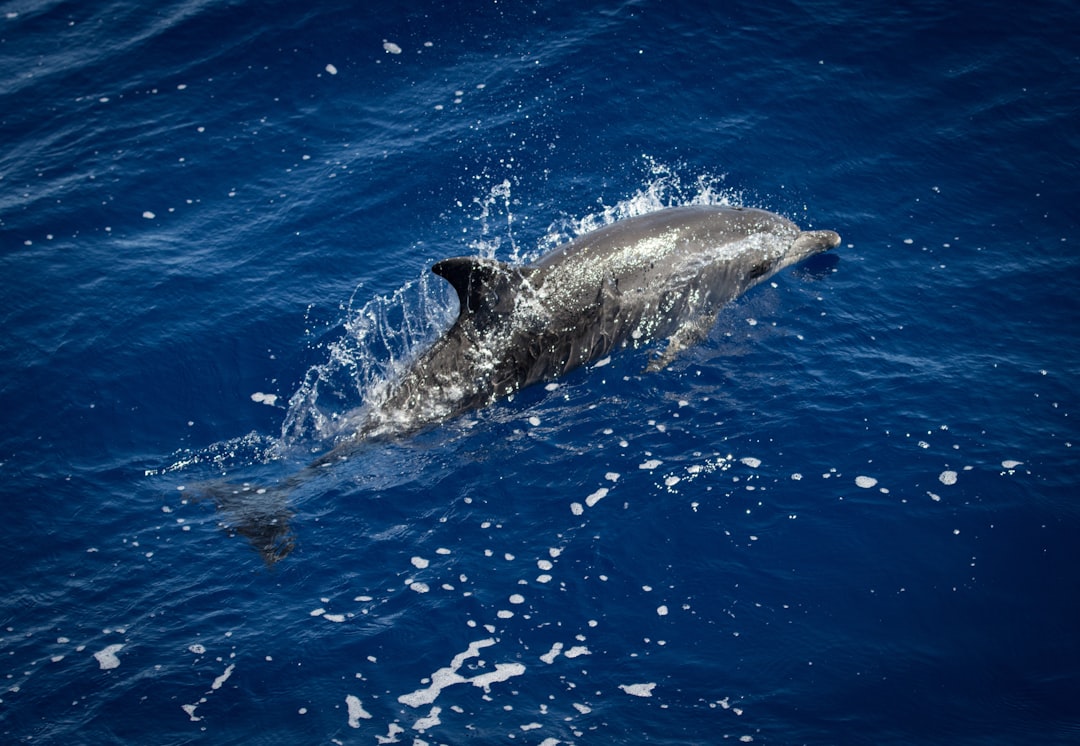The origins of dolphin safe labeling can be traced back to the late 20th century, a time when the fishing industry faced increasing scrutiny over its practices. The widespread use of purse seine nets in tuna fishing led to the unintentional capture of dolphins, resulting in significant declines in dolphin populations. This alarming trend caught the attention of environmentalists and animal rights activists, who began to advocate for more humane fishing practices.
The plight of dolphins became emblematic of broader concerns regarding marine life and the ecological impact of commercial fishing.
The term “dolphin safe” was coined to signify tuna products that were caught without harming dolphins.
This labeling initiative aimed to provide consumers with a choice, allowing them to support sustainable fishing practices while also raising awareness about the plight of dolphins. The movement gained momentum as consumers began to demand more transparency in the seafood industry, leading to a shift in how tuna was marketed and sold.
Key Takeaways
- Dolphin Safe labeling originated as a response to concerns over dolphin deaths in tuna fishing.
- Environmental organizations played a crucial role in promoting and establishing Dolphin Safe standards.
- The label has evolved and been adopted globally, influencing seafood industry practices.
- Despite challenges and controversies, Dolphin Safe labeling has contributed to reducing dolphin mortality.
- Consumer awareness and support remain vital for the continued success and expansion of Dolphin Safe initiatives.
The Impact of the Tuna-Dolphin Controversy
The tuna-dolphin controversy had far-reaching implications for both marine conservation and the fishing industry. As reports of dolphins being killed during tuna fishing operations surfaced, public outrage grew. The media played a crucial role in amplifying these concerns, bringing the issue into the spotlight and prompting consumers to reconsider their purchasing habits.
This controversy not only highlighted the ethical dilemmas associated with commercial fishing but also underscored the interconnectedness of marine ecosystems. The backlash against traditional tuna fishing methods led to significant changes within the industry.
The controversy also sparked a broader conversation about the responsibilities of corporations in protecting marine life, leading to increased scrutiny of fishing practices worldwide. As a result, the tuna-dolphin controversy became a catalyst for change, prompting both consumers and businesses to prioritize sustainability.
The Creation of the Dolphin Safe Label

The creation of the dolphin safe label marked a pivotal moment in the effort to protect marine life. In 1990, the Earth Island Institute launched the Dolphin Safe certification program, establishing guidelines for tuna fishing practices that would ensure the safety of dolphins. This initiative provided a framework for companies to follow, outlining specific criteria that needed to be met in order for their products to carry the dolphin safe label.
The certification process included rigorous monitoring and verification, ensuring that companies adhered to sustainable fishing practices. As the dolphin safe label gained recognition, it became a powerful marketing tool for companies committed to ethical fishing. Brands that adopted the label were able to differentiate themselves in a crowded marketplace, appealing to environmentally conscious consumers.
The label not only signified a commitment to dolphin protection but also represented a broader dedication to sustainable seafood practices. Over time, the dolphin safe label became synonymous with responsible fishing, influencing consumer choices and shaping industry standards.
The Role of Environmental Organizations in Promoting Dolphin Safe Labeling
| Environmental Organization | Role in Dolphin Safe Labeling | Key Metrics | Impact on Dolphin Conservation |
|---|---|---|---|
| Earth Island Institute | Developed and manages the Dolphin Safe Tuna label | Over 90% of US tuna market certified; 30+ years of monitoring | Significant reduction in dolphin mortality in tuna fisheries |
| Greenpeace | Advocates for stricter dolphin safe standards and consumer awareness | Campaigns reaching millions globally; Influenced policy changes | Increased public pressure on tuna companies to adopt dolphin safe practices |
| World Wildlife Fund (WWF) | Supports sustainable fishing practices and certification programs | Partnerships with fisheries; Certification of sustainable tuna products | Promotes ecosystem-based management benefiting dolphins and marine life |
| Marine Mammal Center | Research and education on marine mammal protection | Published studies on dolphin populations; Public outreach programs | Improved scientific understanding aiding dolphin safe policy development |
Environmental organizations played a crucial role in promoting dolphin safe labeling and advocating for sustainable fishing practices. Groups like the Earth Island Institute and Greenpeace mobilized public support and raised awareness about the plight of dolphins in tuna fisheries. Through campaigns, educational initiatives, and partnerships with businesses, these organizations worked tirelessly to promote the importance of dolphin safe labeling as a means of protecting marine life.
These organizations also engaged in lobbying efforts aimed at influencing policy changes within the fishing industry. By collaborating with lawmakers and regulatory agencies, they sought to establish legal frameworks that would support sustainable fishing practices and enforce dolphin protection measures. Their advocacy efforts not only helped to solidify the importance of dolphin safe labeling but also contributed to broader environmental conservation initiatives aimed at preserving marine ecosystems.
The Evolution of Dolphin Safe Labeling Standards
Over the years, dolphin safe labeling standards have evolved in response to changing scientific knowledge and consumer expectations. Initially focused primarily on preventing dolphin bycatch, these standards have expanded to encompass a broader range of sustainability criteria. Today, dolphin safe labeling includes considerations such as habitat protection, ecosystem management, and social responsibility within fishing communities.
The evolution of these standards reflects a growing recognition of the complexities involved in sustainable fishing practices. As research continues to shed light on the impacts of fishing on marine ecosystems, labeling organizations have adapted their criteria accordingly. This ongoing refinement ensures that dolphin safe labeling remains relevant and effective in promoting responsible fishing practices while addressing emerging environmental challenges.
The Global Adoption of Dolphin Safe Labeling

The global adoption of dolphin safe labeling has been a significant development in marine conservation efforts. Initially popularized in the United States, the concept quickly gained traction in other countries as consumers became more aware of the ethical implications of their seafood choices. International organizations and environmental groups worked collaboratively to promote dolphin safe labeling across borders, encouraging countries to adopt similar standards.
As a result, many nations have implemented their own versions of dolphin safe labeling programs, contributing to a more unified global approach to sustainable fishing. This international cooperation has facilitated knowledge sharing and best practices among countries, fostering a collective commitment to protecting marine life. The widespread adoption of dolphin safe labeling has not only benefited dolphins but has also raised awareness about broader issues related to ocean health and biodiversity.
Challenges and Controversies Surrounding Dolphin Safe Labeling
Despite its successes, dolphin safe labeling has faced challenges and controversies over the years. Critics have raised concerns about the effectiveness of certification processes and whether they truly guarantee that products are free from dolphin harm. Some argue that loopholes exist within labeling standards that allow certain fishing practices to continue without adequate oversight.
These criticisms have prompted calls for greater transparency and accountability within the certification process. Additionally, there have been debates regarding the impact of dolphin safe labeling on local fishing communities. Some fishermen argue that strict regulations can hinder their livelihoods and limit their ability to compete in the market.
Balancing environmental protection with economic considerations remains a complex challenge for policymakers and stakeholders involved in the seafood industry.
The Effectiveness of Dolphin Safe Labeling in Protecting Dolphins
The effectiveness of dolphin safe labeling in protecting dolphins is a topic of ongoing research and discussion. Studies have shown that tuna fisheries adopting dolphin safe practices have significantly reduced bycatch rates and improved overall dolphin populations in certain regions. However, challenges remain, particularly in areas where enforcement is lax or where illegal fishing practices persist.
While dolphin safe labeling has undoubtedly raised awareness about the importance of protecting marine life, its long-term effectiveness relies on continued vigilance and commitment from both consumers and industry stakeholders. Ongoing monitoring and evaluation are essential to ensure that labeled products genuinely reflect sustainable practices and contribute positively to dolphin conservation efforts.
The Expansion of Dolphin Safe Labeling to Other Seafood Products
In recent years, there has been a notable expansion of dolphin safe labeling principles beyond tuna products into other seafood categories. As consumers increasingly seek out sustainable options across various types of seafood, organizations have begun developing similar certification programs for shrimp, salmon, and other fish species. This expansion reflects a growing recognition that responsible fishing practices are essential not only for dolphins but for all marine life.
The incorporation of dolphin safe principles into broader seafood labeling initiatives has created opportunities for consumers to make informed choices about their seafood consumption. By extending these standards across different products, organizations aim to promote sustainability throughout the entire seafood supply chain, ultimately contributing to healthier oceans and ecosystems.
The Future of Dolphin Safe Labeling
The future of dolphin safe labeling appears promising yet challenging as environmental concerns continue to evolve. As climate change impacts marine ecosystems and fish populations shift due to changing ocean conditions, there will be an increasing need for adaptive management strategies within fisheries. Dolphin safe labeling will need to remain flexible and responsive to these changes while continuing to prioritize dolphin protection.
Moreover, advancements in technology may play a crucial role in enhancing monitoring and enforcement efforts related to dolphin safe practices. Innovations such as satellite tracking and data analytics could provide valuable insights into fishing activities and help ensure compliance with labeling standards. As stakeholders work together to navigate these challenges, the future of dolphin safe labeling will depend on collaboration between consumers, businesses, and environmental organizations.
Consumer Awareness and Support for Dolphin Safe Labeling
Consumer awareness and support are vital components in the success of dolphin safe labeling initiatives. As more individuals become informed about the ethical implications of their seafood choices, they are increasingly inclined to seek out products that align with their values. Educational campaigns aimed at raising awareness about dolphin conservation have proven effective in encouraging consumers to prioritize sustainably sourced seafood.
Furthermore, consumer demand for transparency has prompted companies to adopt more responsible practices voluntarily. As businesses recognize that consumers are willing to pay a premium for sustainably sourced products, they are more likely to invest in certifications like dolphin safe labeling. This shift in consumer behavior not only benefits dolphins but also fosters a culture of sustainability within the seafood industry as a whole.
In conclusion, dolphin safe labeling has emerged as a critical tool in promoting sustainable fishing practices and protecting marine life. From its origins rooted in activism to its global adoption across various seafood products, this initiative has significantly influenced consumer choices and industry standards alike. While challenges remain, ongoing efforts from environmental organizations, businesses, and consumers will be essential in ensuring that dolphin safe labeling continues to evolve and effectively contribute to marine conservation efforts for years to come.
The history of the dolphin safe label is a fascinating journey that highlights the intersection of environmental activism and consumer awareness. For a deeper understanding of this topic, you can explore a related article that discusses the impact of labeling on marine conservation efforts. Check it out here:
